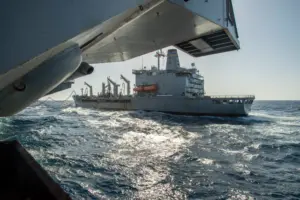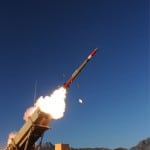
The Department of Transportation this week enrolled nine commercial ships in an initiative to provide additional sealift capacity to the Defense Department. Secretary of Transportation Pete Buttigieg on July 25 announced the first ships are joining the Tanker Security Program (TSP), “which will help strengthen both our supply chains and our national security by delivering fuel to our armed forces around the world while creating hundreds of good jobs for American mariners.” TSP, backed by Congress, aims to establish a…

 By
By 











